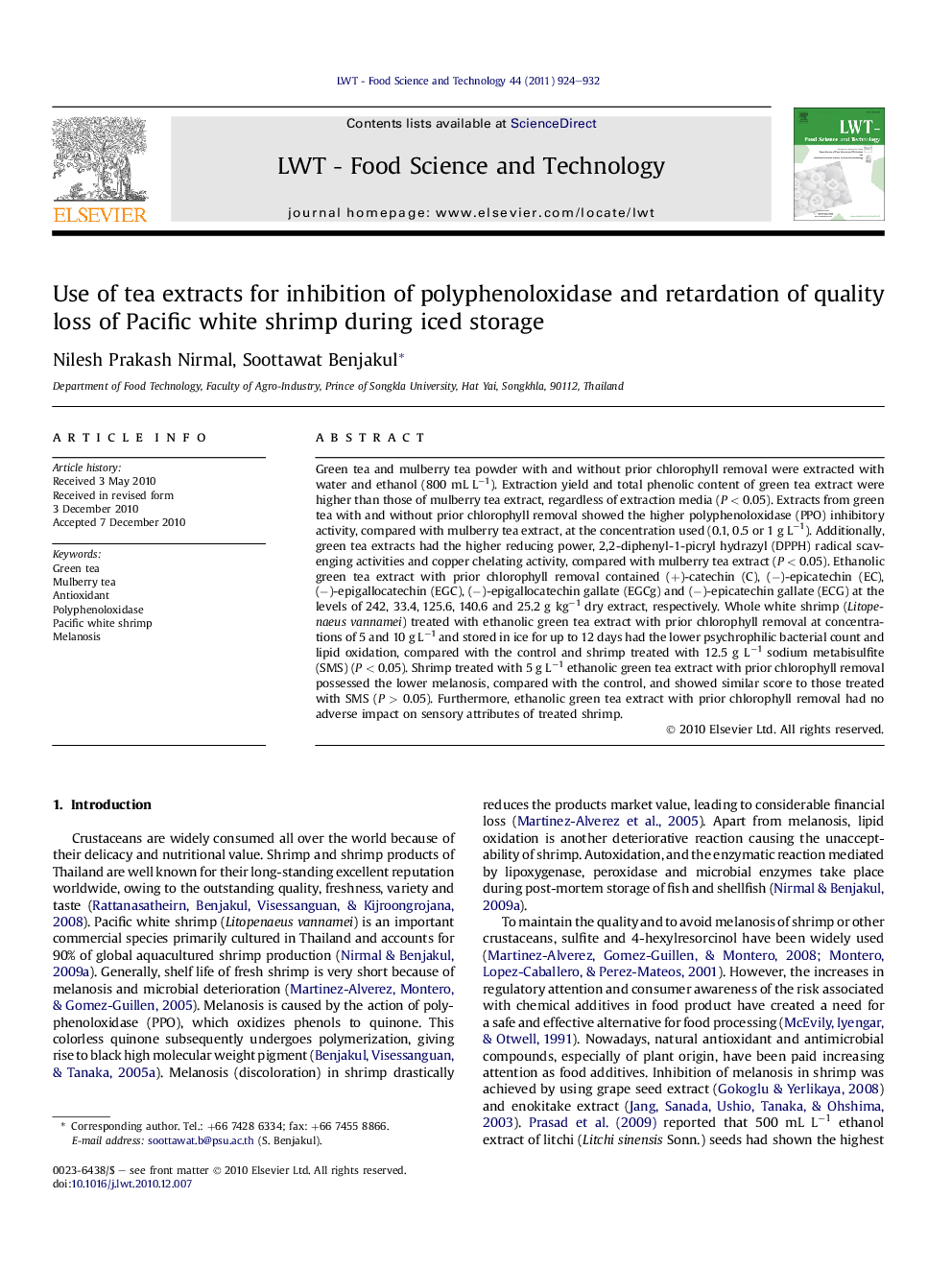| Article ID | Journal | Published Year | Pages | File Type |
|---|---|---|---|---|
| 4564345 | LWT - Food Science and Technology | 2011 | 9 Pages |
Green tea and mulberry tea powder with and without prior chlorophyll removal were extracted with water and ethanol (800 mL L−1). Extraction yield and total phenolic content of green tea extract were higher than those of mulberry tea extract, regardless of extraction media (P < 0.05). Extracts from green tea with and without prior chlorophyll removal showed the higher polyphenoloxidase (PPO) inhibitory activity, compared with mulberry tea extract, at the concentration used (0.1, 0.5 or 1 g L−1). Additionally, green tea extracts had the higher reducing power, 2,2-diphenyl-1-picryl hydrazyl (DPPH) radical scavenging activities and copper chelating activity, compared with mulberry tea extract (P < 0.05). Ethanolic green tea extract with prior chlorophyll removal contained (+)-catechin (C), (−)-epicatechin (EC), (−)-epigallocatechin (EGC), (−)-epigallocatechin gallate (EGCg) and (−)-epicatechin gallate (ECG) at the levels of 242, 33.4, 125.6, 140.6 and 25.2 g kg−1 dry extract, respectively. Whole white shrimp (Litopenaeus vannamei) treated with ethanolic green tea extract with prior chlorophyll removal at concentrations of 5 and 10 g L−1 and stored in ice for up to 12 days had the lower psychrophilic bacterial count and lipid oxidation, compared with the control and shrimp treated with 12.5 g L−1 sodium metabisulfite (SMS) (P < 0.05). Shrimp treated with 5 g L−1 ethanolic green tea extract with prior chlorophyll removal possessed the lower melanosis, compared with the control, and showed similar score to those treated with SMS (P > 0.05). Furthermore, ethanolic green tea extract with prior chlorophyll removal had no adverse impact on sensory attributes of treated shrimp.
